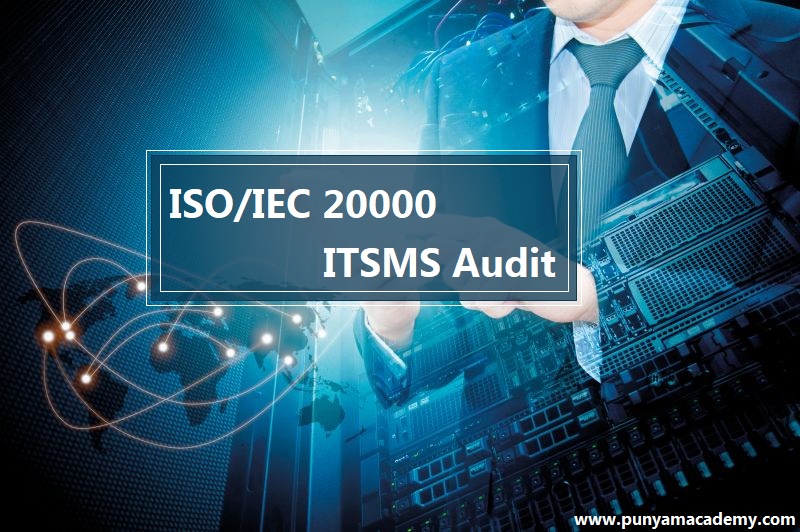The ISO 20000 standard helps IT departments in ensuring that their ITSM framework processes comply with international best practices and business needs. The certification assists firms in benchmarking how they monitor service levels, provide correct services, as well as evaluate their performance on an internationally recognized scale. The purpose of an ISO 20000 audit is to determine if the organization meets certain standards. During the audit, it must be determined whether each condition has been met, and the necessary proof must be presented. So, here are some recommendations for making the audit process more fun during the audit process.
Be mentally ready for surprises: Even with the best efforts, the audit interview may still include surprises. The auditor asked an unexpected inquiry. an unexpectedly acting-up mechanism. Your train of thought was broken by a colleague's interruption. Alternatively, a difference of opinion over discovery or a window of opportunity. It takes place. Ask your peers or the leadership for assistance if this happens. In this, you are never acting alone. Teamwork is required to implement ISO/IEC 20000. This is known to auditors.
Lead the discussion: Always prepare your idea. Create a presentation of slides. That helps reduce a 90-minute interview to 45 minutes. Which generally goes well since you are well-prepared. And auditors are anxious to hear what you have to contribute. By taking the initiative, you also have the chance to demonstrate what you want the auditors to see. It is your time to shine.
Assist the auditor's thoughts: The auditor is typically comfortable with you when you showcase throughout the initial section of the interview in which you take the lead. Everything is due to your preparation and performance. Most of what the auditor is looking for you already know. By proactively demonstrating this, the auditor will have fewer inquiries. As a result, interviews are sometimes completed in less than the allocated time.
Educate the ISO/IEC 20000 auditor: With the support of ISO 20000 documents, it is simple to learn about the organization for the auditor who is auditing you for the first time. For instance, your company's activities or the structure of the organization, as well as the accomplishments and milestones, are unfamiliar to the auditor. Make time during the interview to educate the auditor. The more the auditor understands you and your business, the more valuable he or she may be to you.
Take charge of the process or service: Own it! Account for the quality of your process or services if you are the process or service owner. When it comes to fulfilling quality objectives, never blame anybody else. Even if you rely deeply on someone else. Show, through examples, that you have done all possible to ensure a high-performing process or service.
Be enthusiastic and confident: Express the excitement about owning the process or service. How have you immersed yourself in the ISO/IEC 20000-1 standard's requirements? And how you have educated yourself and others you work with through official ISO/IEC 20000 auditor training and awareness training. Convey your enthusiasm to learn more about the users of your process or the consumers of your service with confidence. And how you constantly enhance the process or service to ensure its relevance and value to your organization's results and outcomes.
There is always an opportunity for improvement: There will never be a perfect procedure or service. The auditor is aware of this and they are not expecting it to be. So, missing a target now and again is typical. The auditor is primarily interested in seeing that you take action as well as that you must be constantly looking for ways to improve your process or service through continuous improvement.
Answer the question only: During the audit, practice your communication abilities. Take your time listening to the auditor's query. And just respond to what is requested. This is not the time for rambling. Or I could digress. It might convey uncertainty. Furthermore, you may divulge information that the auditor may later utilize. Something you may not want to discuss further. Auditors are excellent communicators. They are aware of what you are saying.
You can also ask questions: When you're not sure what the auditor is asking, ask for clarification. Or inquire as to which criteria he or she is inquiring about. The auditor may use terminology that is unfamiliar to you or your company. Never be afraid to ask for an explanation of a question. The better you comprehend the question, the better you can answer it.
Timely Follow-Up on Corrective Action Plans and Findings: Follow up as soon as the auditor has identified a nonconformity or an opportunity for improvement in your process or service. You have a set amount of time to present a corrective action plan. Deliver the plan before the deadline. And carry out the strategy by the goal dates specified in the plan. It demonstrates your commitment. It is also a sign of appreciation for the auditor's efforts to support you on your journey of continuous improvement.
Source: https://20000procedures.wordpress.com/2023/01/21/iso-20000-audit-tips-and-techniques-to-make-the-audit-process-enjoyable/


No comments yet